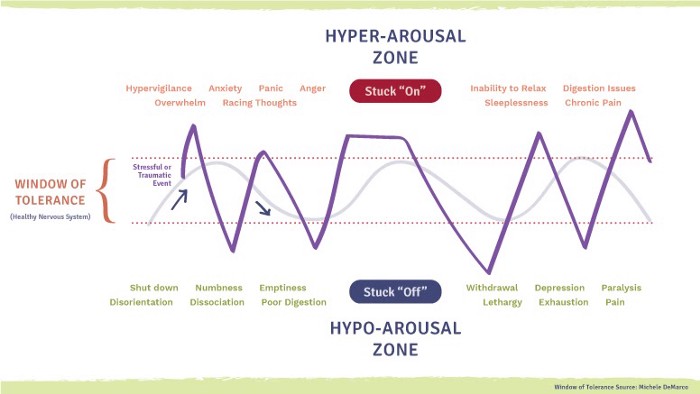Therapy & Treatment
What We Do as Counselors and Therapists
Not all therapies are equal
The word "therapy" often times is synonymous with "talking" and while many "talk" therapies are valid and effective, some conditions need more than descriptions to make meaning, and process to affect change. When author Bessel van der Kolk, M.D. wrote "The Body Keeps the Score" it was as if my
world suddenly made sense, or at least I had some, if elementary, understanding of what had happened for me most of my life. While talking about the problem can feel good at the time and produce some resolve, the body will continue to send signals to the host that something is still grievously wrong. Enter, the science of memories. Imagine for a moment that I could erase all of the bad memories in your mind! What then do you suppose would become of your mood, your behaviour, your inner dialogue, or even your very personality? You would be in essence…reset!
The way that I see it counselors and therapists are hired to help the patient to get back to normal or what we call homeostasis or baseline. The way most therapies work to do this it to increase resilience and decrease response. Therapists will teach a client breathe work and recommend daily practice to create new neural pathways that tell the central nervous system to “slow” down or “chill out”, all designed to increase resilience! Repetitive breath work over time tells the body. ‘no matter what you might pick up from the 5 senses (sight, smell, taste, touch, and sound), DO NOT FREAK OUT!” This will happen over time for anyone who does the work. Simple breathing techniques like the 4-7-8 Breath when done 3x daily for 30 days will change the way the nervous system fires! Other cognitive skills taught in therapy are designed to ‘decrease response’ by teaching the client to override some thoughts and throw others out the window all together if they can. This is designed to bring the client into what’s called the “Window of Tolerance.” First let’s look at a normal nervous system to see what it should look like.

Adapted from Ogden et al., 2006; Siegal, 1999; and Segal, 2013.
A normal response to daily stimuli means the body’s nervous system will take care of keeping you in the window of tolerance and should be well in the world, or close. You should have ups and downs at times and it should be manageable. But what about the traumatized brain, what does stimuli look like in a nervous system of a person with trauma? The image below is an illustration of a traumatized brain and shows Hyperarousal and Hypoarousal, two very opposite conditions both the effect of an impacted brain and nervous system. “Trauma is any somatic (body) response by way of past recollected event”, so what does that mean? That means the images you have of past events when recalled, can and most often do, cause

Adapted from Ogden et al., 2006; Siegal, 1999; and Segal, 2013.
the body to go into a negative response, we call this getting “triggered.” Sometimes though we can be triggered even when we don’t realize we’re being triggered and even those responses can register at different severity levels from a 10, panic and rage, to a 2 or lower feeling uneasy or irritable. What I know today is this, some conditions take more than talking to heal. The rest of this page we will break down the differing styles we use to address different conditions, most call for a combination of modalities to make a full recovery.
Memory Reconsolidation using Eye Movements
REM Sleep and processing emotion
Thanks to the work of Dr. Matthew Walker and in his book, "Why we Sleep" it is evident that REM sleep and dreaming has a purpose, to move emotions and sensations. You can find this title on Audible and would be a great read for anyone. Dr. Walker talks about the need for REM and NREM sleep and how we process out emotions naturally during the 4th and 5th stages of sleep called Rapid Eye Movement. If we are getting the correct amount of REM each night we are processing the events of the day as we should rather than accumulate them as it happens in the traumatised brain.
Noradrenalin is blocked only in REM
Another huge discovery for researchers, and definitely one for me as a specialist, is the fact that in REM sleep the body is void of the neurotransmitter noradrenaline. Why is this significant? Because noradrenaline is necessary for the reconsolidation of a fear memory. If noradrenaline is void it means the emotions of a memory are essentially deleted and all we are left with are the facts of the memory. The result is like a book on a shelf, you can open the book look at the truth and no emotions!
Lucid Wake REM Cycle
While teaching trauma therapy I came up with a term, Lucid Wake REM Cycle, which basically means moving the eyes back and forth just as in natural REM, but the client is fully awake and fully alert. We have used eye movement therapies to solve PTSD, Depression, Anxiety, OCD, and other therapy issues where the culprit is emotions and sensations. Think of it, it's not the facts of the issues that are hurting you, it's the emotions and sensations right?
Emotions are process out for good!
The astonishing part of this type of work is the emotions are separated from the facts and they are essentially gone for good in most cases. Single episode issues are child's play these days and chronic longitudinal trauma is treatable and manageable. The process of treatment for separating emotions from facts stays the same always, the skills of the therapist determine what to "put under the eye movements" and when the etiology or origin is determined then it's a matter of application and repeat even for life long issues.
Cognative Behavioural and Other "Talking" Therapies

Let’s first look at Cognitive Behavioural Therapy or CBT. CBT is a form of psychotherapy that focuses on how a person’s thoughts, beliefs, and attitudes affect their feelings and behaviors. Practitioners base CBT on the theory that problems arise from the meanings people give to events, as well as the events themselves. Unhelpful thoughts can make it difficult for a person to function confidently in different situations. These tasks are all addressing the part of the brain called the Medial Prefrontal Cortex, the “thinking” part of the brain. CBT can have a positive impact on how people feel and act and equip them with coping strategies that help them deal with challenges. There are many problems that CBT can be addressed, this list while not exhaustive, is just some of the benefits of CBT:
During a course of CBT, a person can learn to:
- identify problems more clearly
- develop an awareness of automatic thoughts
- challenge underlying assumptions that may be wrong
- distinguish between facts and irrational thoughts
- understand how past experience can affect present feelings and beliefs
- stop fearing the worst
- see a situation from a different perspective
- better understand other people’s actions and motivations
- develop a more positive way of thinking and seeing situations
- become more aware of their own mood
- establish attainable goals
- avoid generalizations and all-or-nothing thinking
- stop taking the blame for everything
- focus on how things are rather than how they think they should be
- face their fears rather than avoid them
- describe, accept, and understand rather than judge themselves or others

Over the last several years I have had the privilege to teach hundreds of psychiatrist, psychologists, and therapists a main line eye movement modality called Accelerated Resolution Therapy (ART). Over those years I also used ART in my practices and have found that ART is NOT the core to healing per say, but a component in all eye movement therapies and some other modalities that incorporate the Medial Prefrontal Cortex and the Limbic System. The mode of change happens when the two parts of the brain are activated simultaneously, the Limbic System needs to be aroused at the same time the eye’s are being moved back and forth, this creates a pathway for the information (sensations, emotions, and images) to be transferred to the cortex and filed in the correct areas of long-term storage.

I will leave you with this for now, the trauma or strong emotions that have been wreaking havoc on your life do not have to your story forever, you can rewrite the narrative and take back your life. Someone once said, curiosity is the beginning of change. If you’ve invested this much time reading these pages and searching this site, you my friend are curious, now do something, something different and I promise you this much, you will get something different!